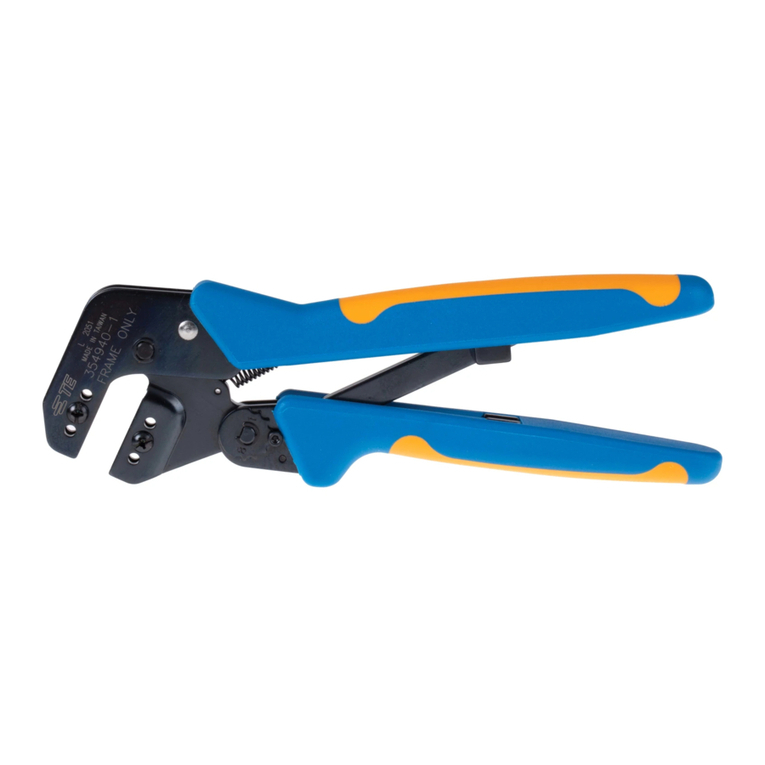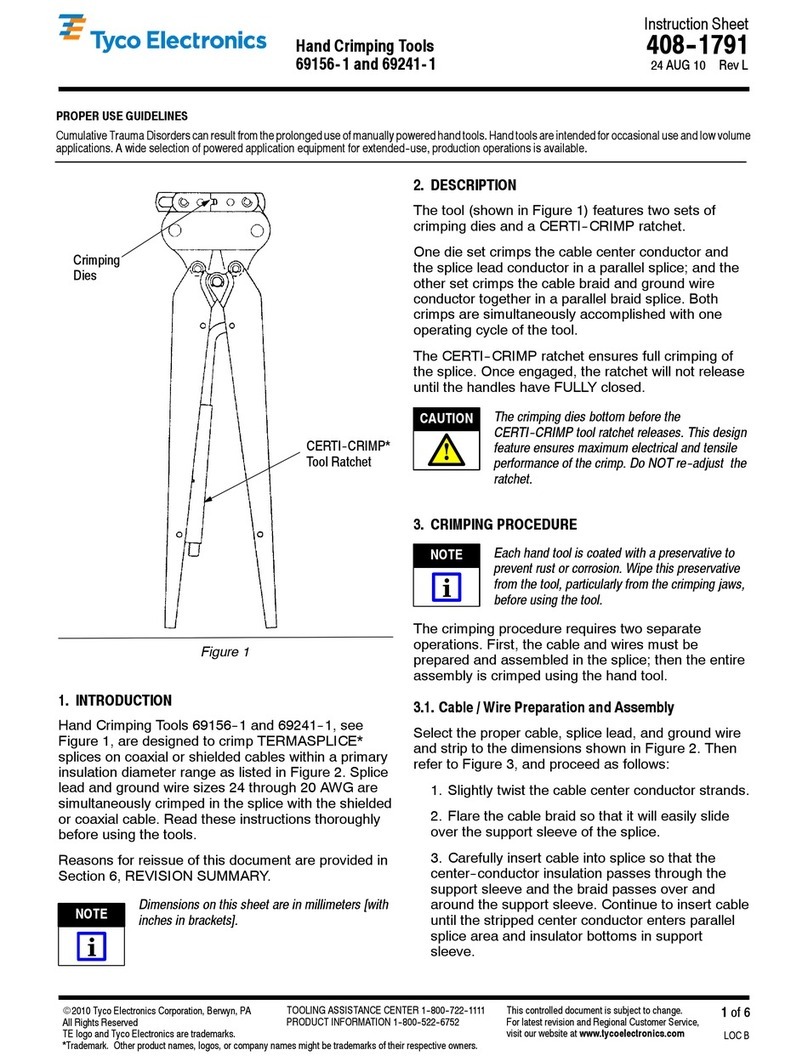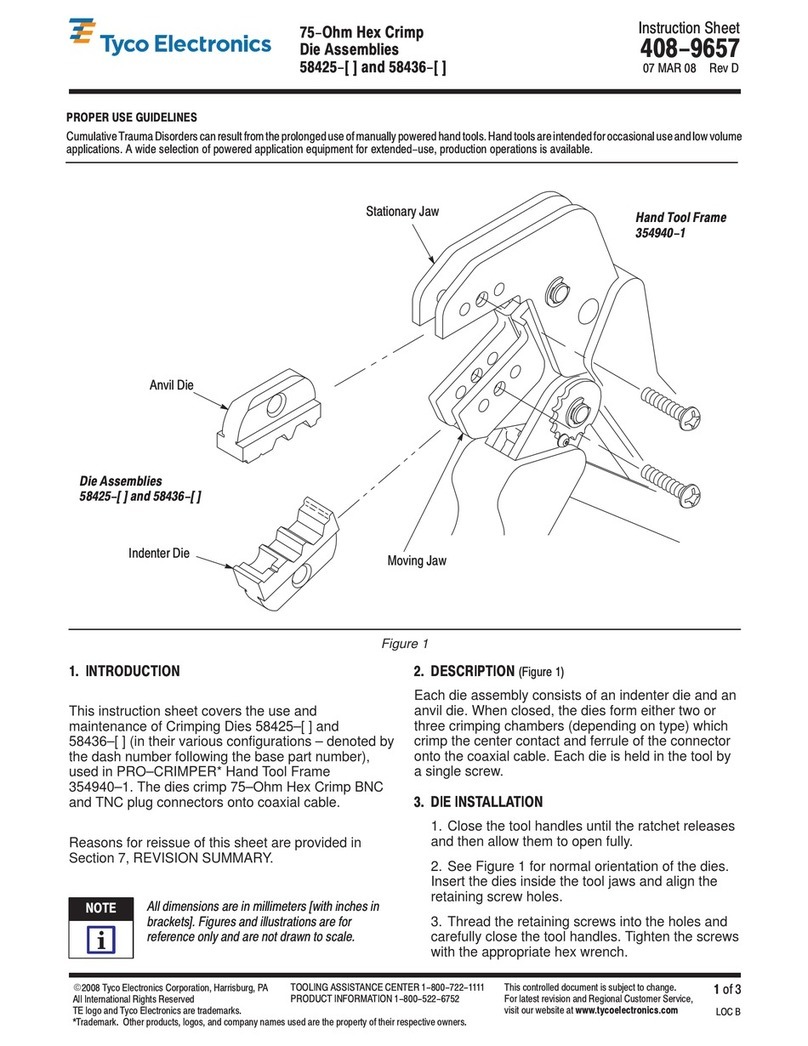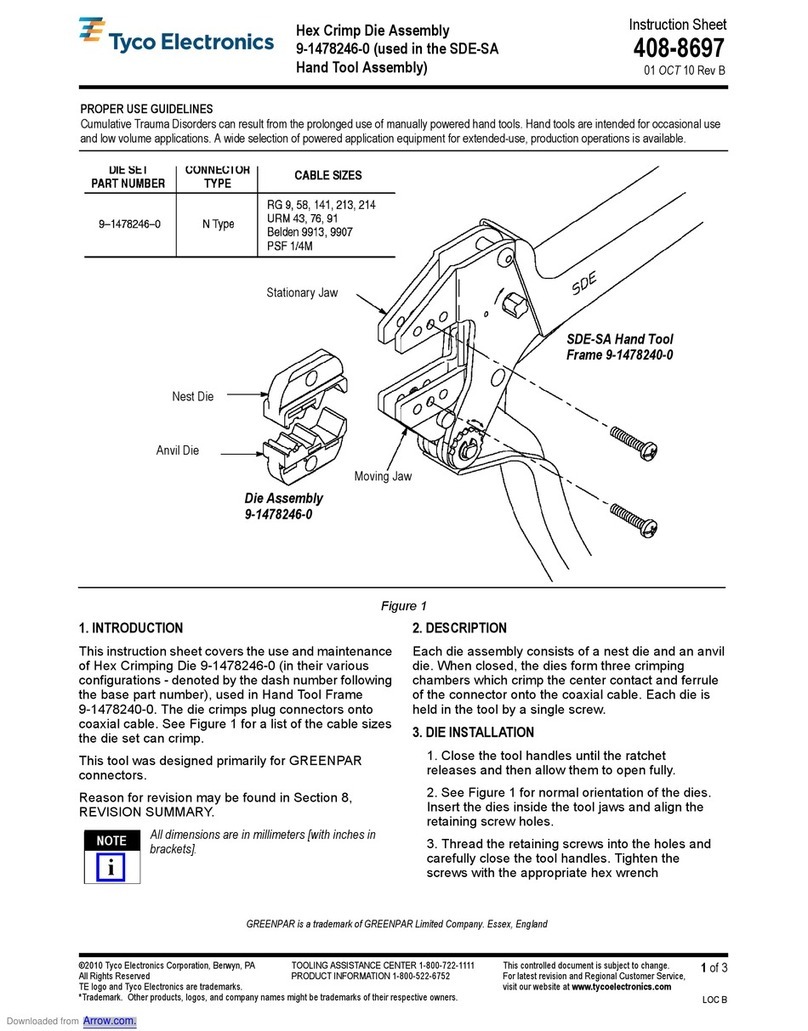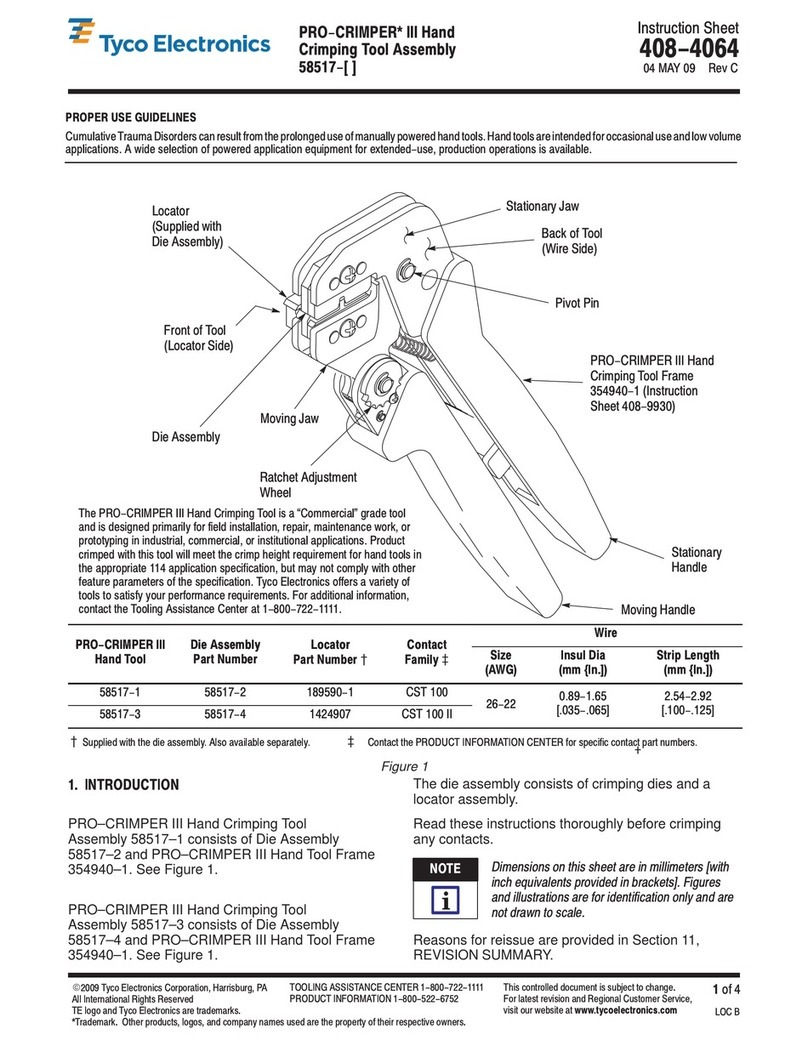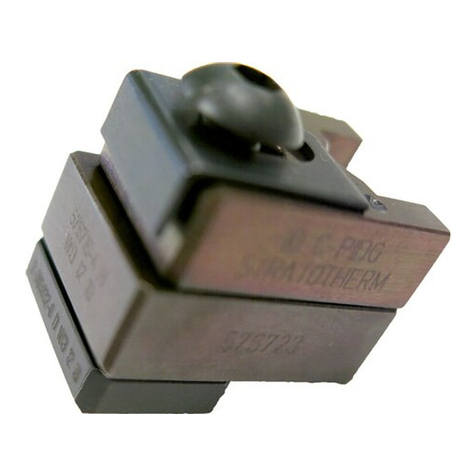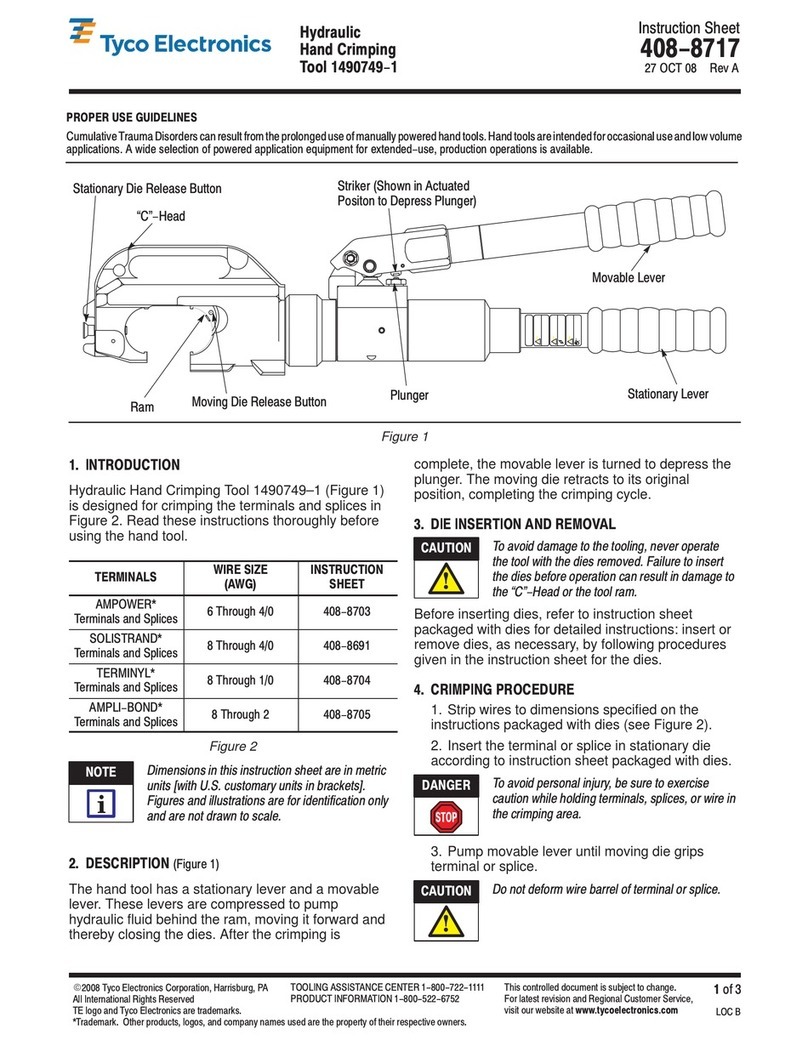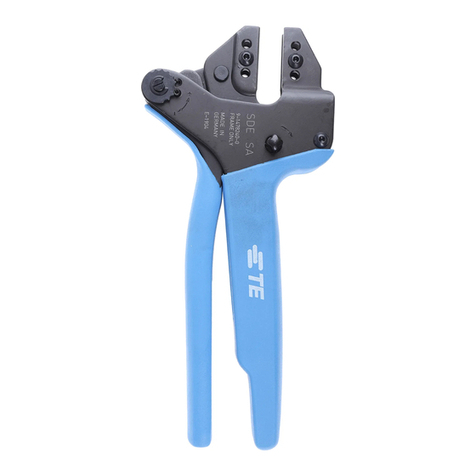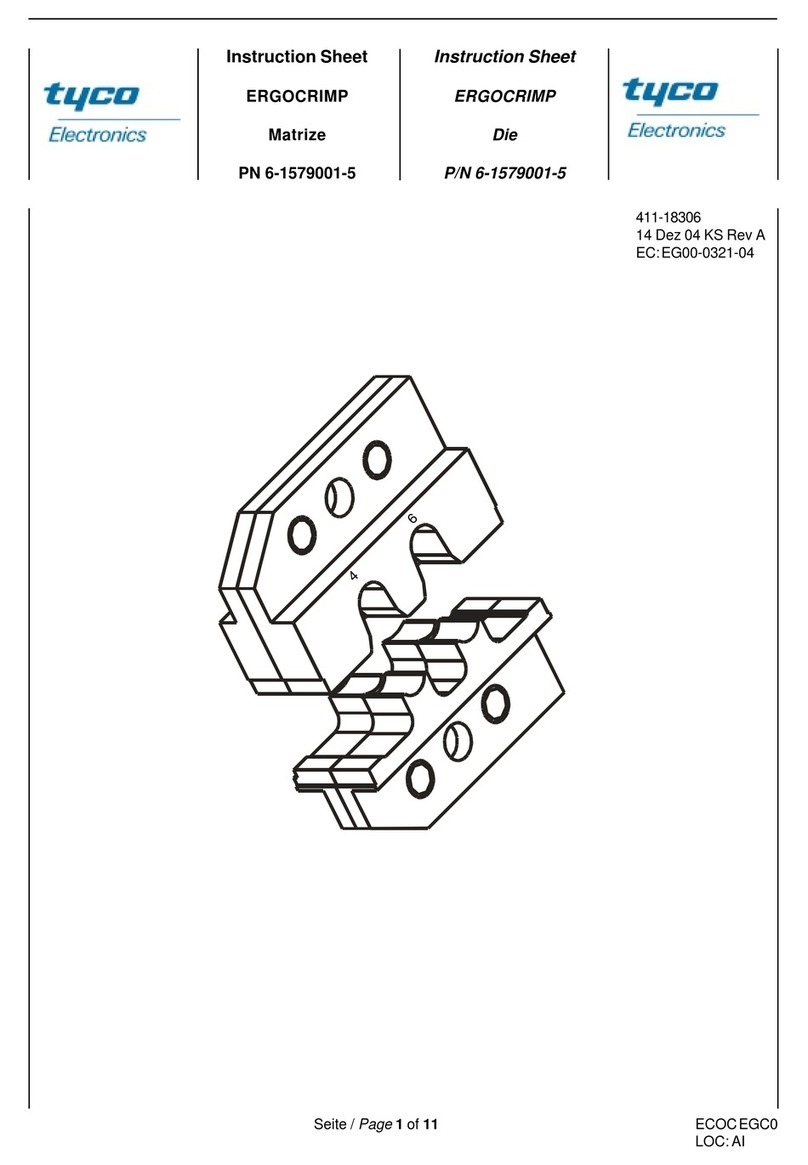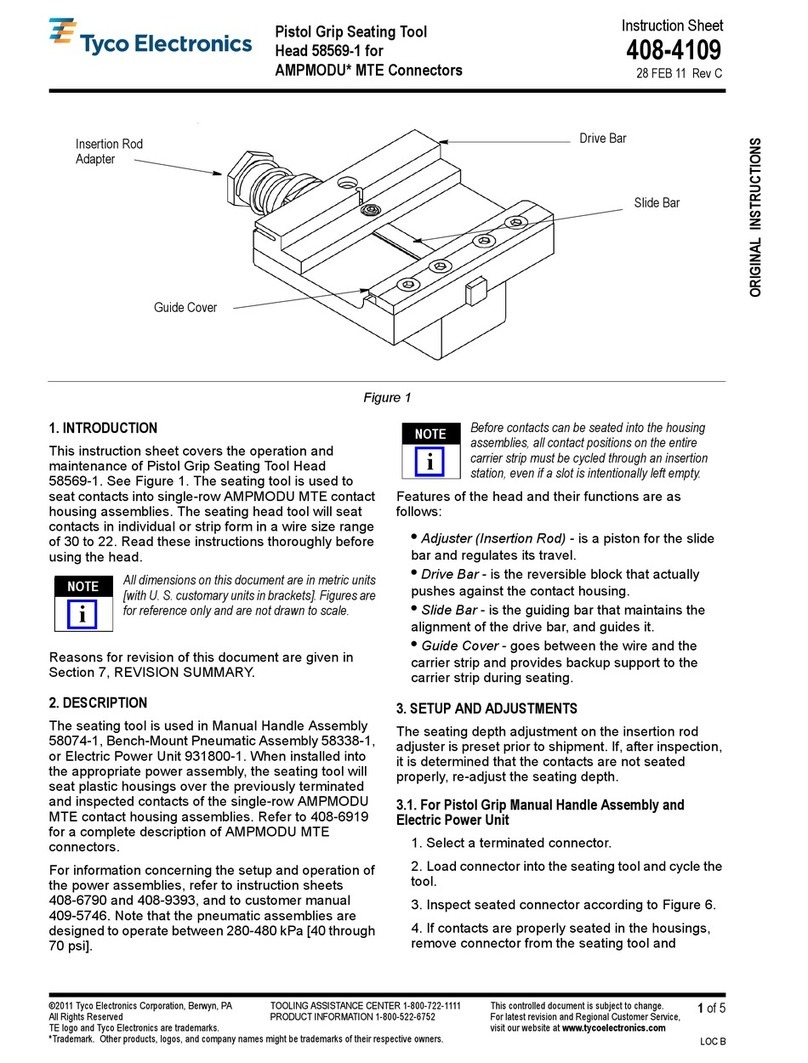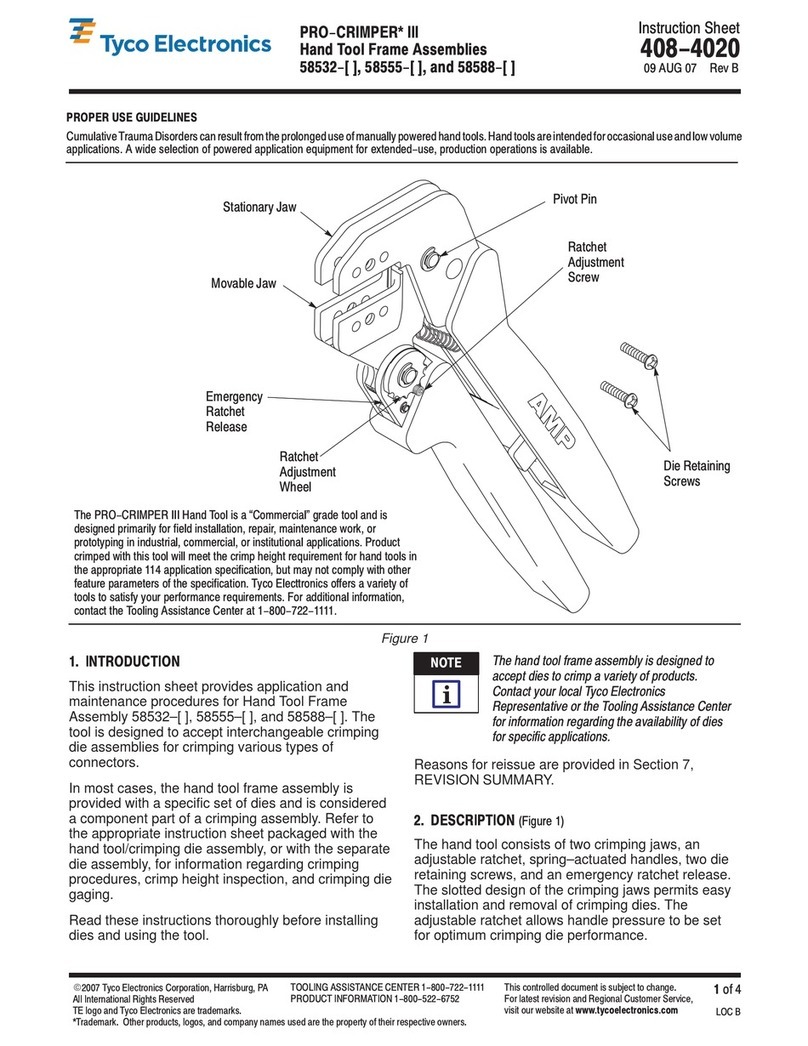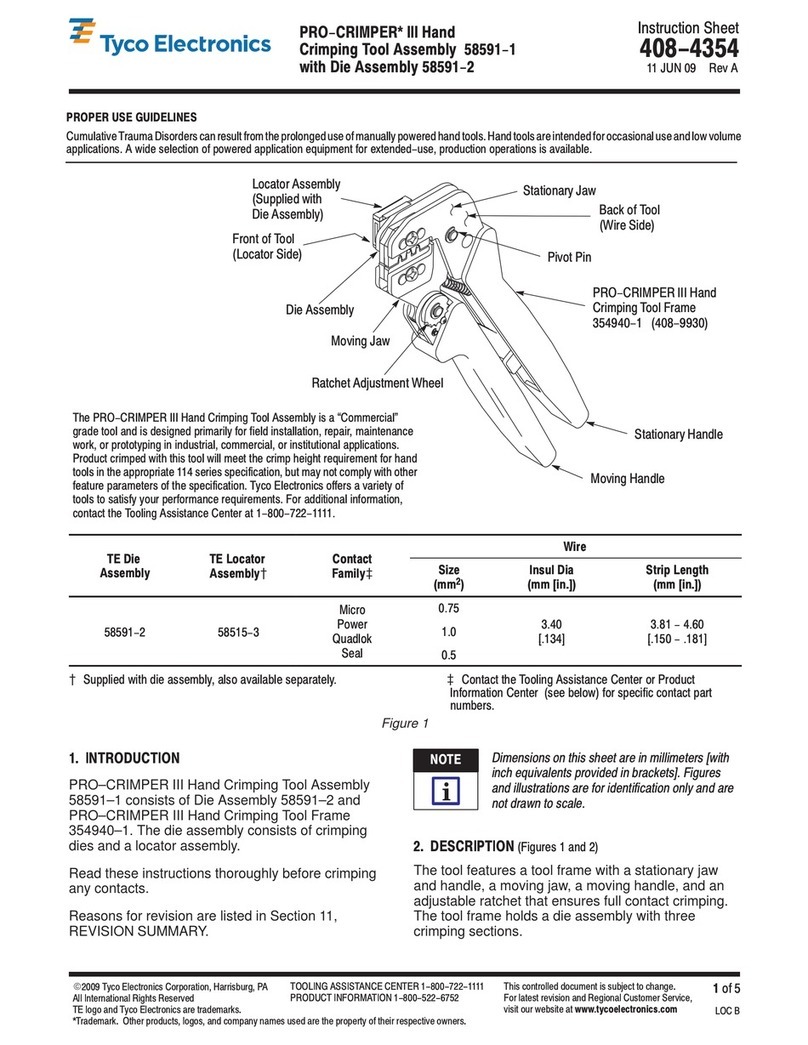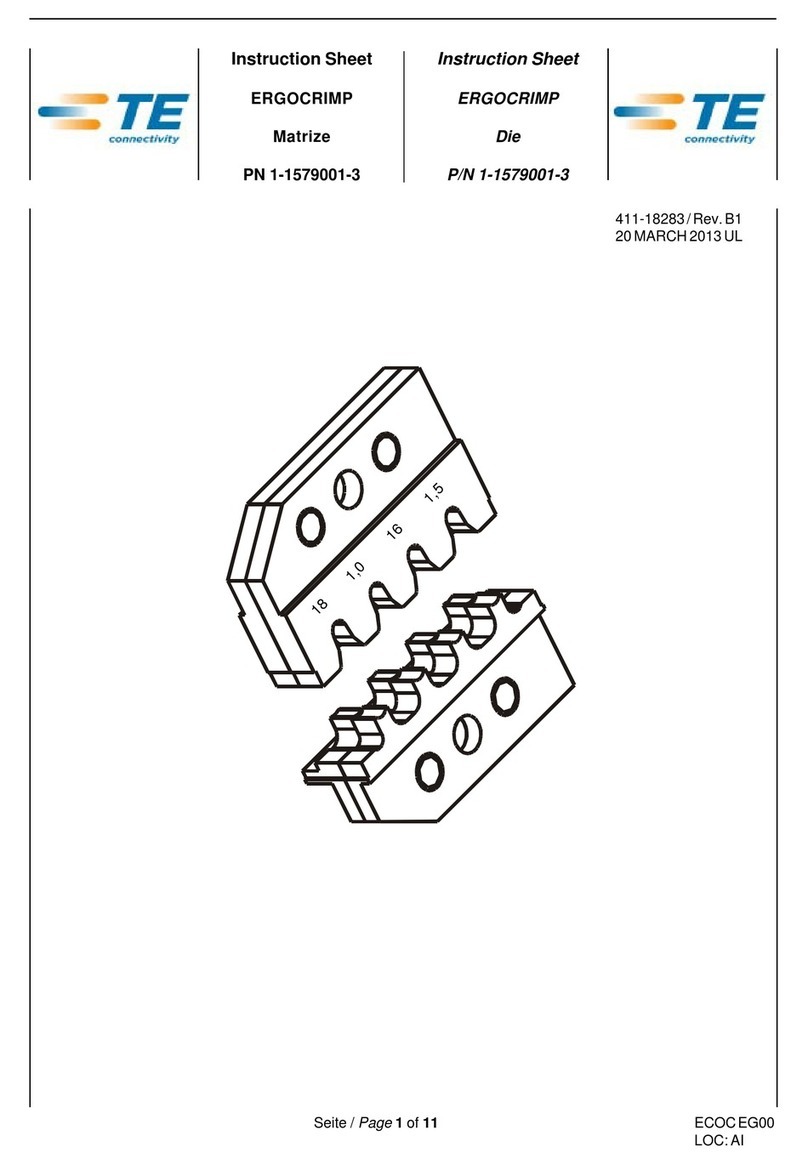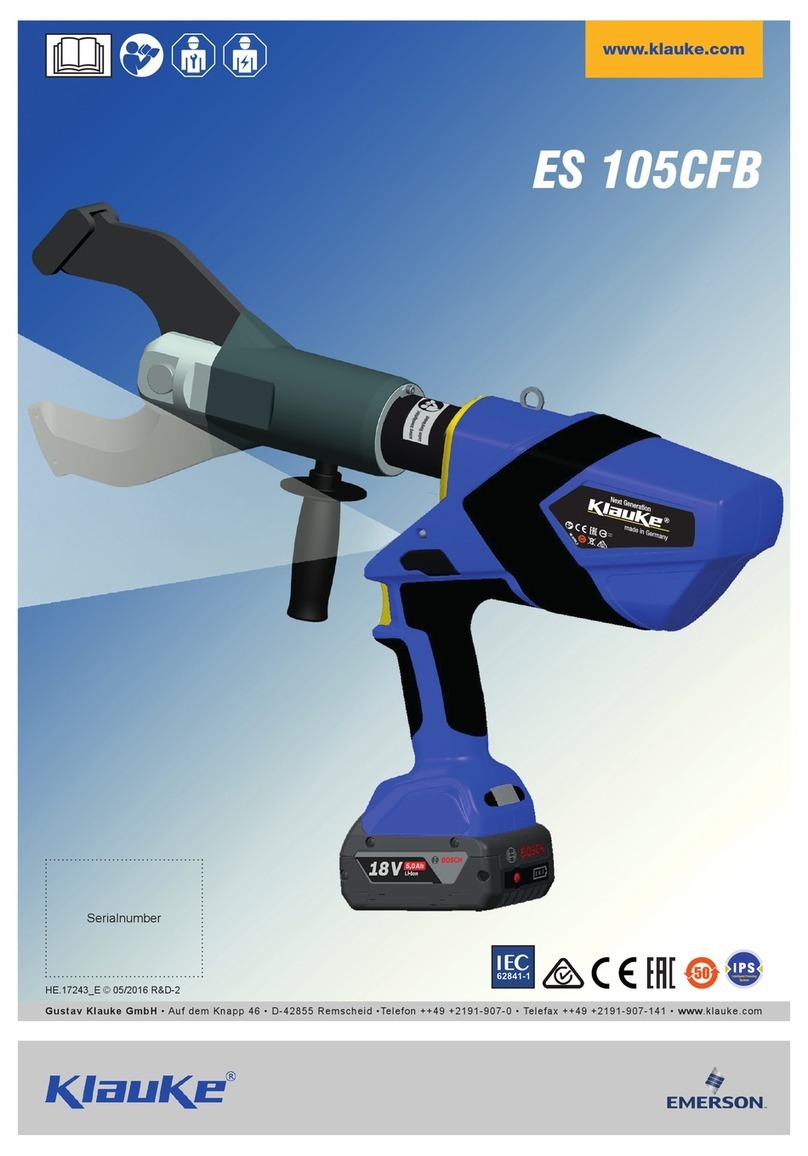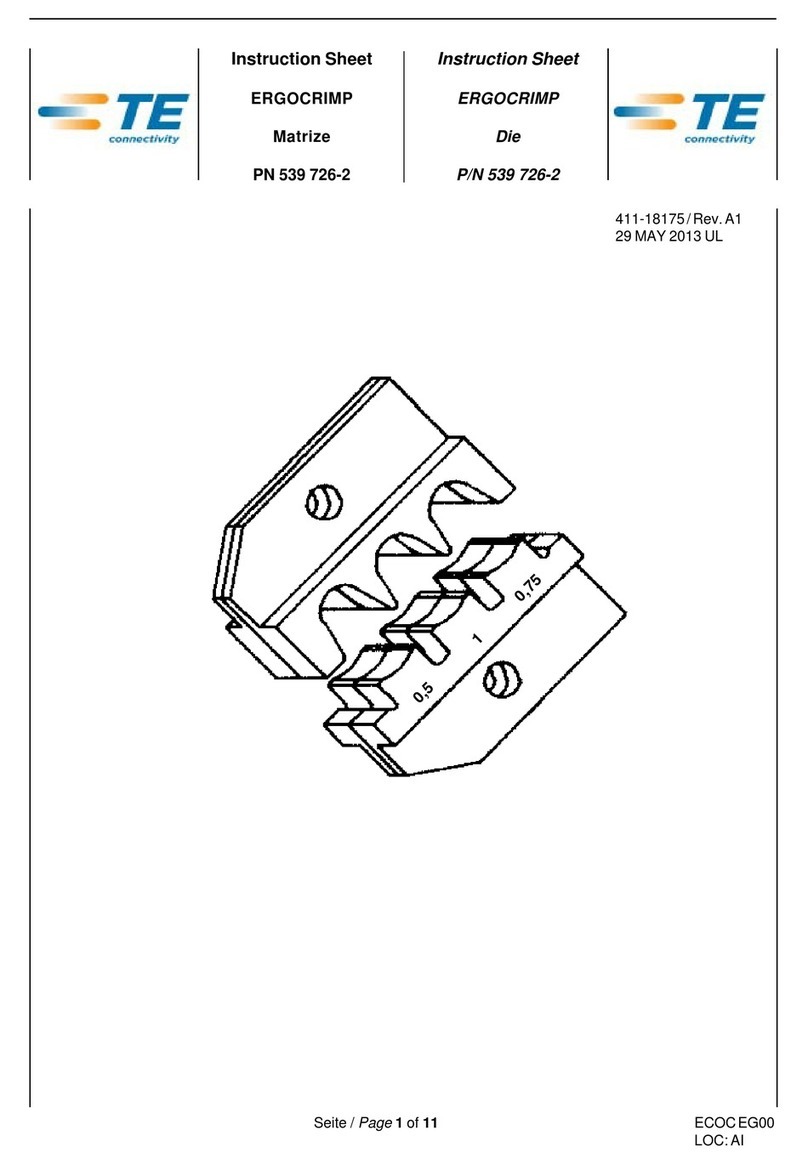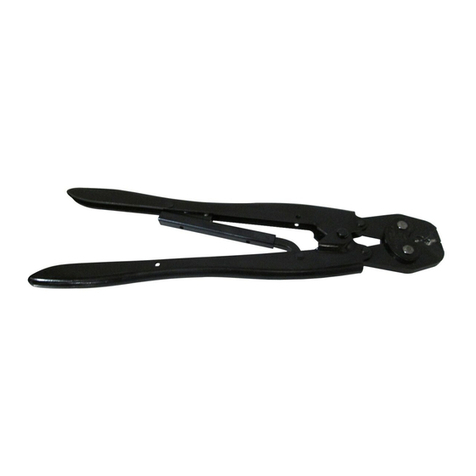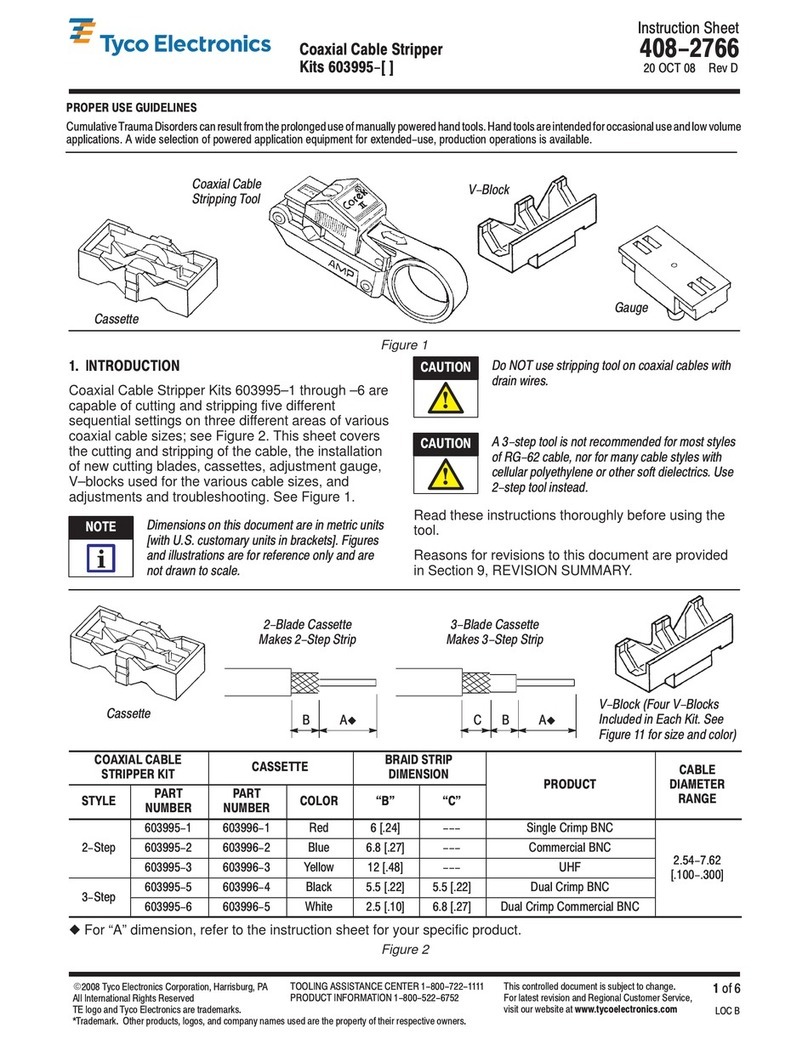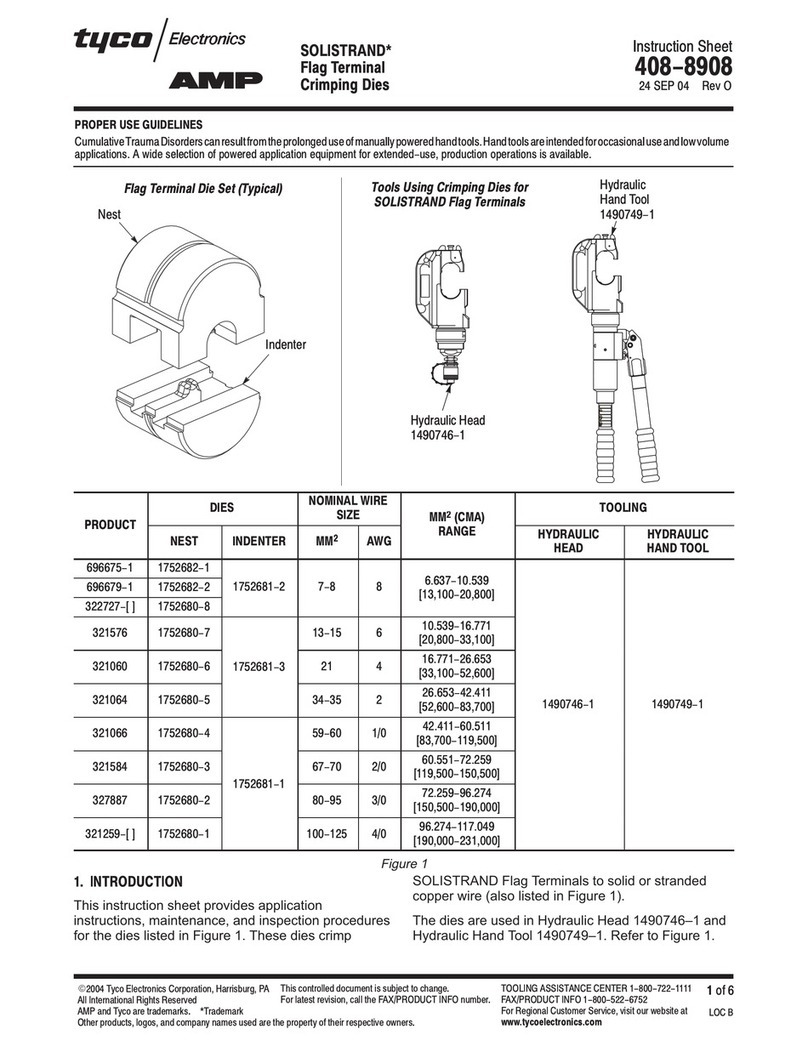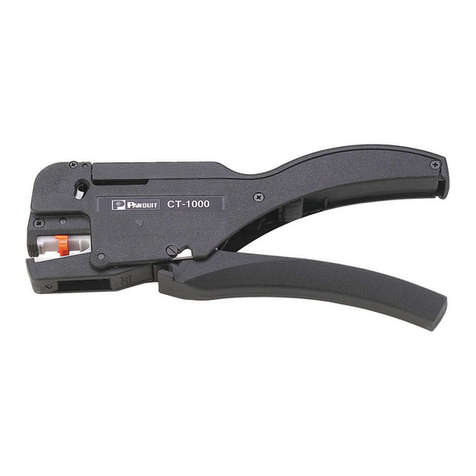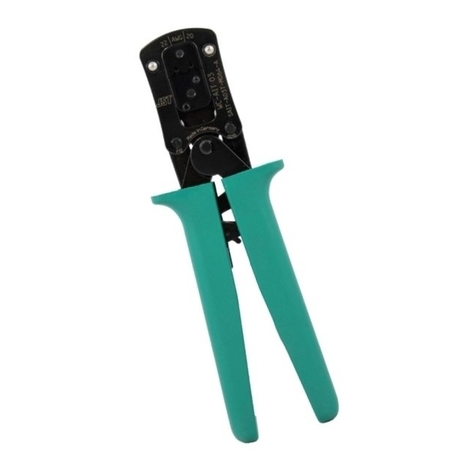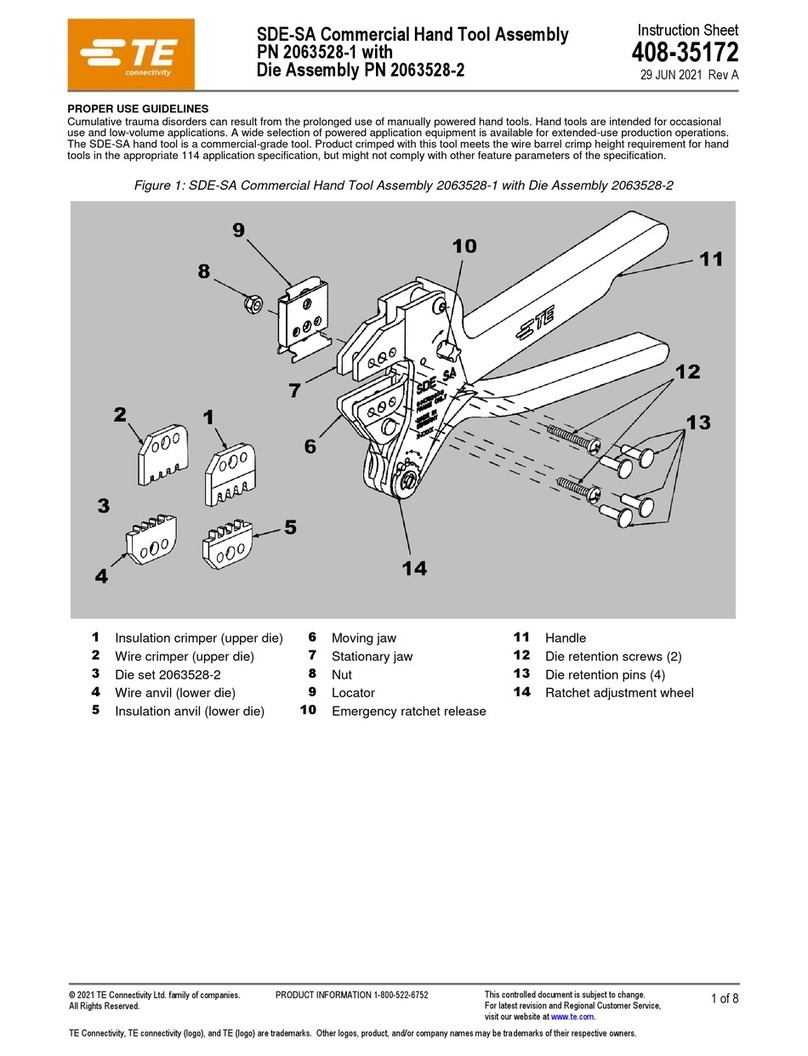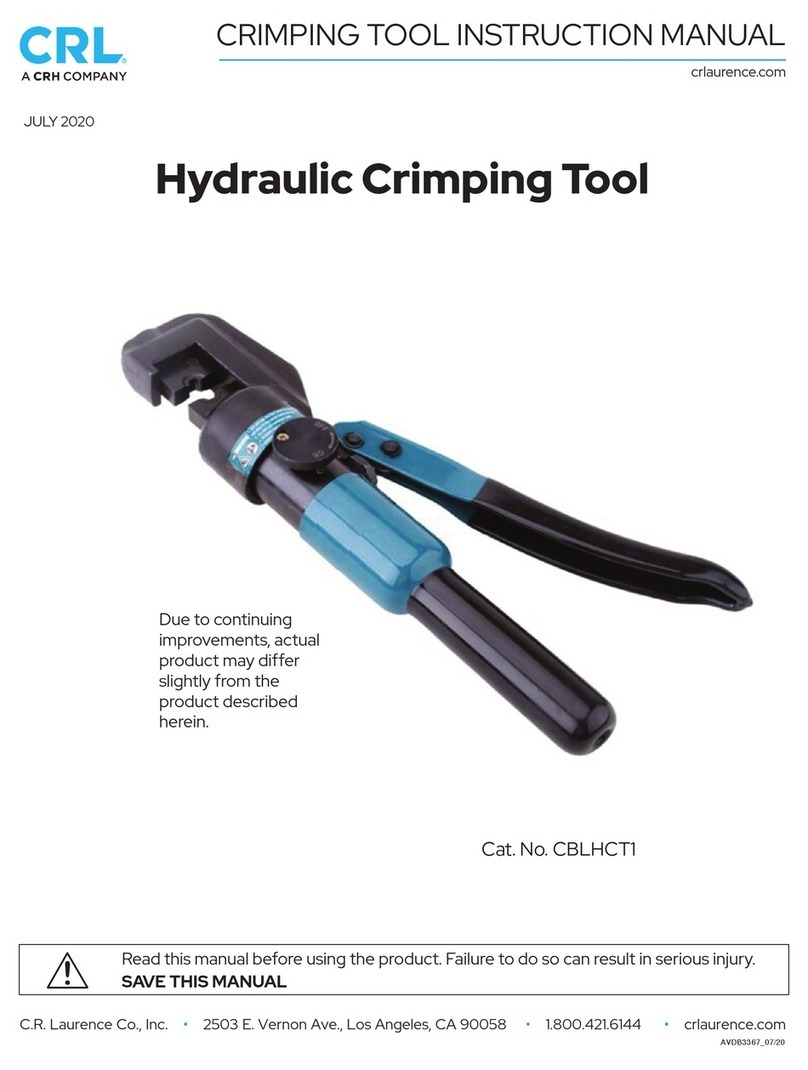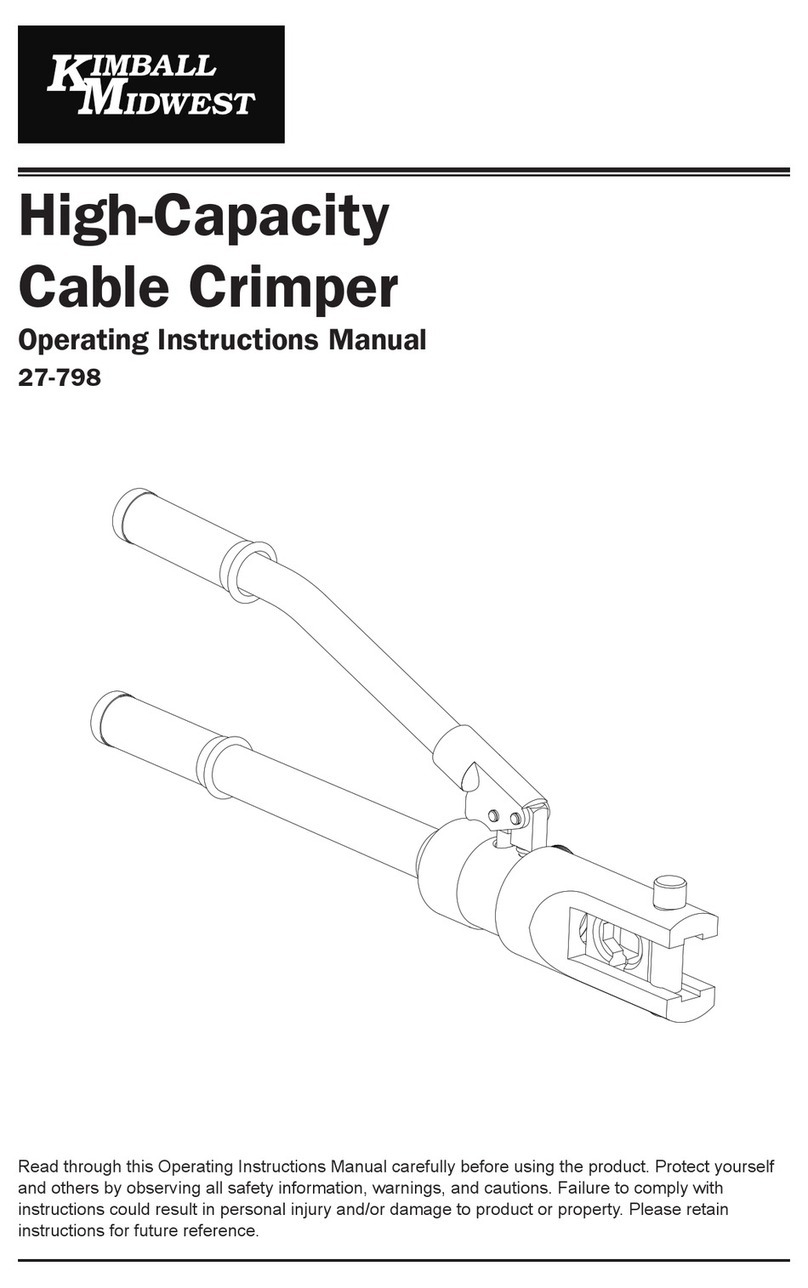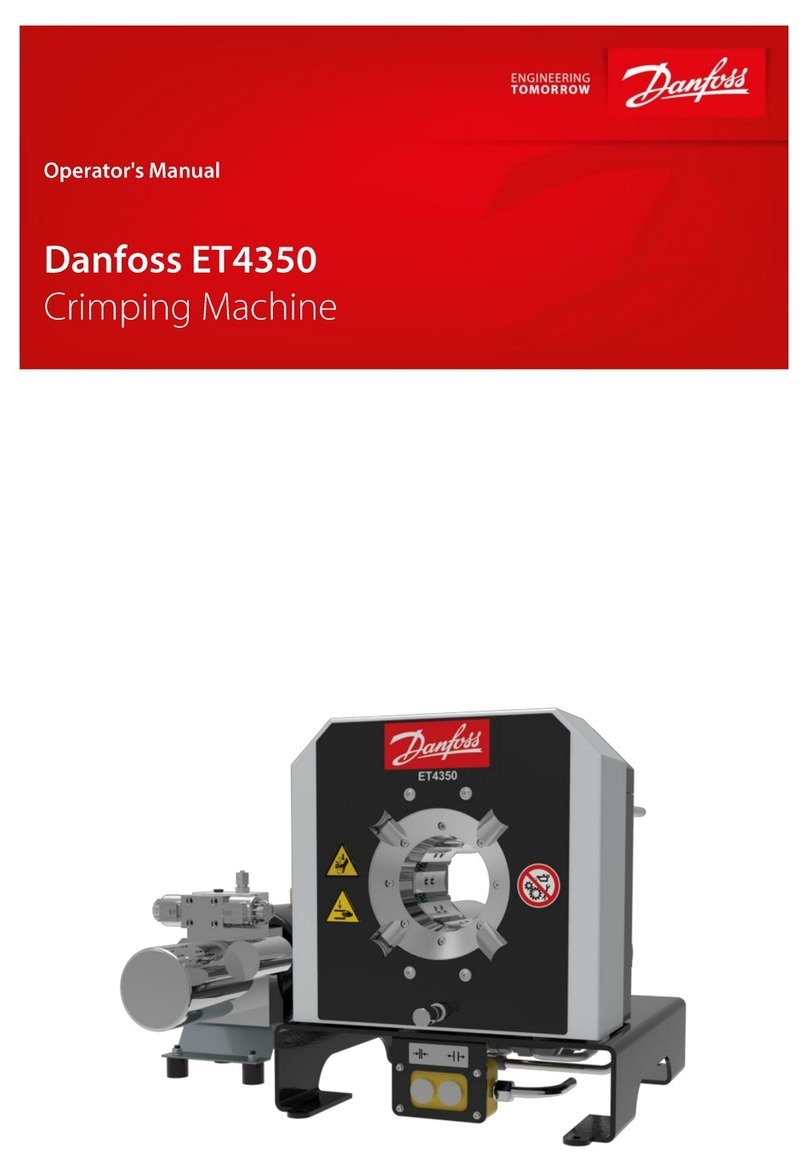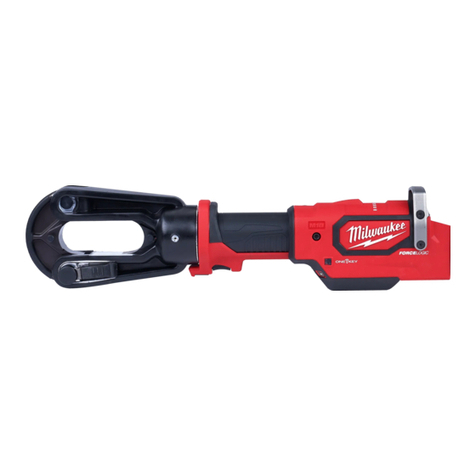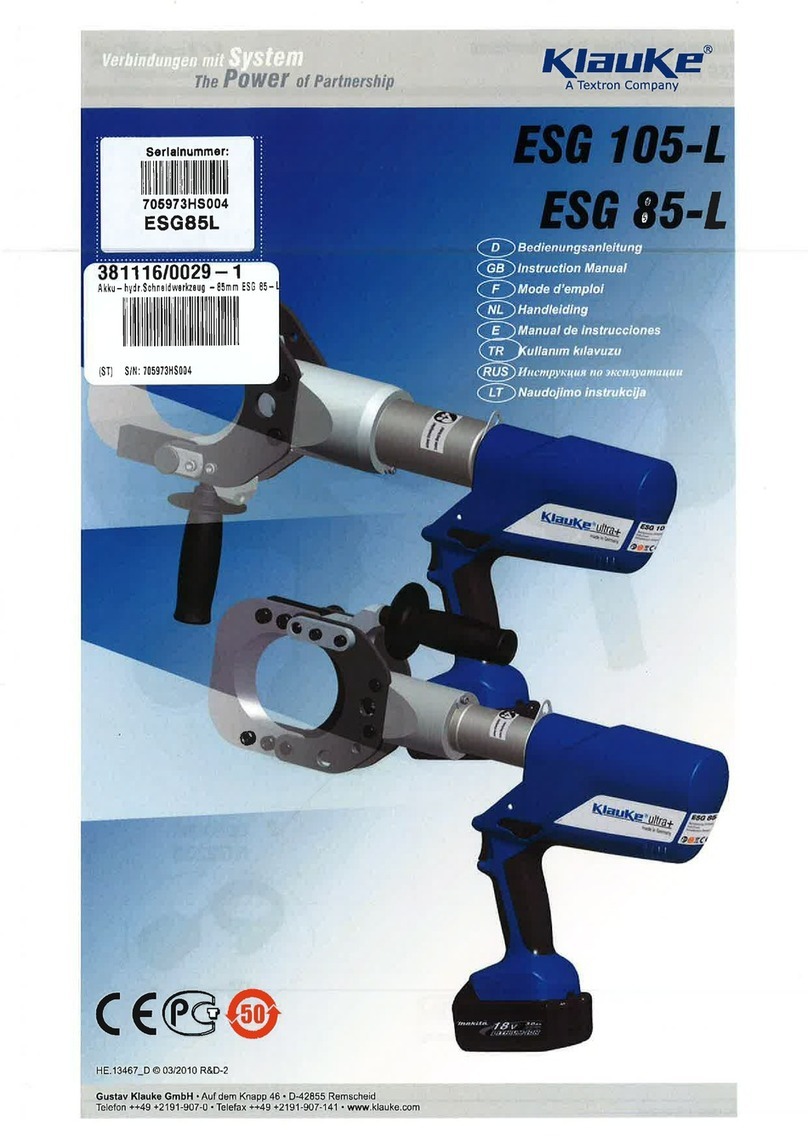
408–8851
SDE PEW 12 Hand Tool FrameAssembly9–1478240–0
3of 3Rev O
3. All pins, pivot points, and bearing surfaces
should be protected with a thin coat of any good
SAE 20 motor oil. Do not oil excessively.
4. When the tool is not in use, keep handles closed
to prevent objects from becoming lodged in the
crimping jaws. Store the tool in a clean, dry area.
4.2. Periodic Inspection
Regular inspections of the tool should be performed
by quality control personnel. A record of scheduled
inspections should remain with the tool or be supplied
to supervisory personnel responsible for the tool.
Inspection frequency should be based upon amount
of use, working conditions, operator training and skill,
and established company standards.
1. Remove all lubrication and accumulated film by
immersing the tool (handles partially closed) in a
suitable commercial degreaser that will not affect
paint or plastic material.
2. Make certain that all pivot pins are in place and
secured with retaining rings.
3. Close tool handles until ratchet releases and
then allow them to open freely. If they do not open
quickly and fully, the spring is defective and must
be replaced.
4. Inspect the tool frame for wear or damage,
paying particular attention to the tool jaws and
pivot points. If damage is evident, refer to Section
6, TOOL REPLACEMENT. If tool is acceptable,
lubricate and return to service.
This tool is recommended for R&D prototyping,
networkingapplications,commercial/industrial
maintenance, and field service repair. For other
applications, please contact your Tyco Electronics
Sales Representative or the Tyco Electronics
ToolingAssistance Centerat 1–800–722–1111.
5. CRIMP HEIGHT ADJUSTMENT (Figure 4)
The tool frame assembly features a ratchet
mechanism and adjustment wheel with a range of
settings. The ratchet mechanism ensures that the tool
has completed the cycle. The adjustment wheel
controls the amount of handle pressure exerted on
the tool jaws and crimping dies during the crimping
procedure. Although the ratchet is preset prior to
shipment, it is important that you verify the crimp
height. Also, general use and subsequent wear may
cause the tool to go out of adjustment. It is
recommended that the crimp height be inspected —
and adjusted, if necessary — on a regular basis by
quality control personnel.
This is a general explanation of the procedure.
For specific information, refer to the instruction
sheet packaged with the die assembly.
1. Crimp a contact onto a properly–prepared wire
of the correct size.
Never reuse or re–terminate a terminal.
2. If the crimp height is greater than
recommended, remove the ratchet wheel
adjustment screw and rotate the adjustment wheel
counterclockwise (+) to a higher setting. Repeat as
required.
3. If the crimp height is less than recommended,
remove the ratchet wheel adjustment screw and
rotate the adjustment wheel clockwise (–) to a
lower setting. Repeat as required.
4. If the crimp cannot be made to conform to the
dimensions provided in the appropriate product
application specification, the tool and/or dies are
defective and must be replaced.
Figure 4
RatchetWheel
AdjustmentScrew
Adjustment
Wheel RetainingPlate
6. TOOL REPLACEMENT
SDE PEW 12 Hand Crimping Tool Frame Assembly
9–1478240–0 is inspected prior to shipment. It is
recommended that it be inspected upon arrival to
ensure that it has not become damaged during
shipping.
Additional tools may be ordered from:
CUSTOMER SERVICE (38–35)
TYCO ELECTRONICS CORPORATION
P.O. BOX 3608
HARRISBURG, PA 17105–3608
7. REVISION SUMMARY
New release per EC 0990–1026–03.
NOTE
NOTE
CAUTION
